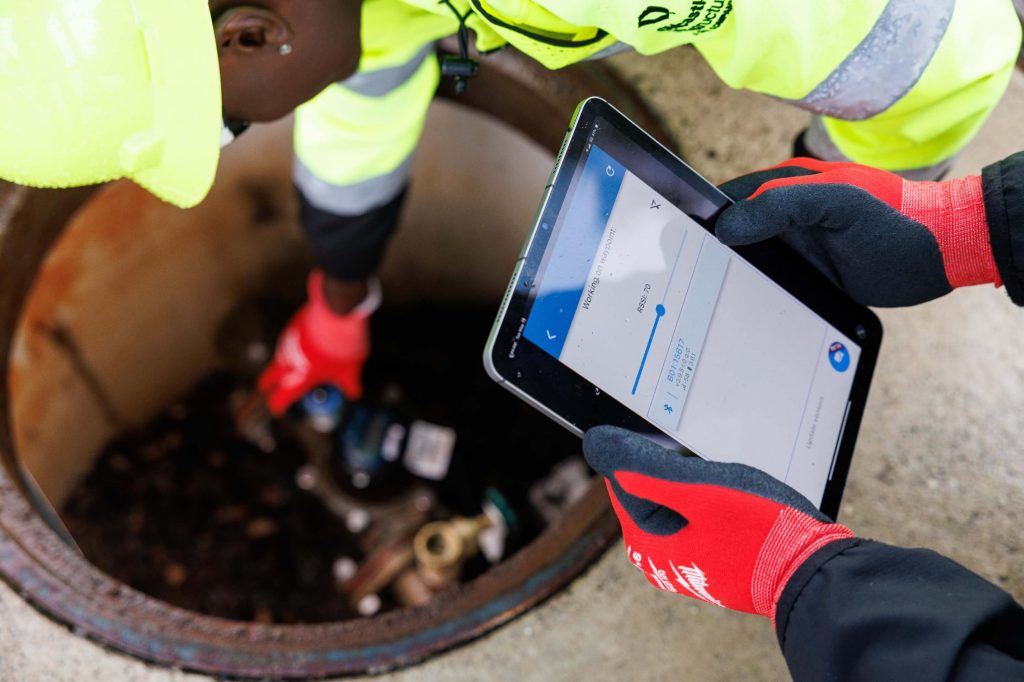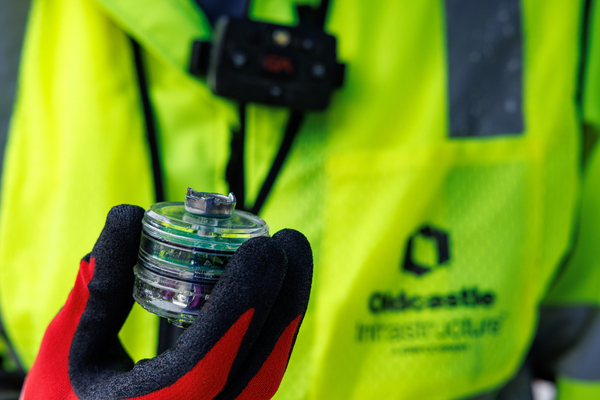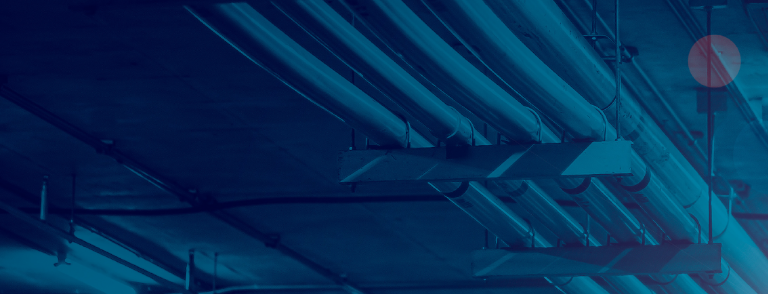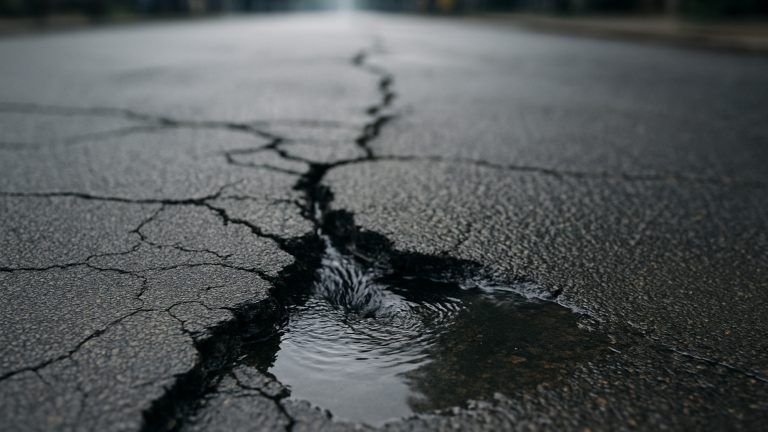CivilSense™
Real-Time Leak Detection FAQ
Municipal Water Asset management


The CivilSense™ water asset management solution uses a combination of predictive risk analysis and real-time targeted leak detection to assess failure risk and to detect, locate and size existing leaks within a water distribution network.
Read the FAQ to learn more about the CivilSense™ real-time targeted leak detection AI.
Who can benefit from CivilSense™ real-time leak detection?
CivilSense™ uses acoustic sensors and proprietary AI to detect, locate and size leaks in clean water distribution networks.
By pinpointing leaks it enables municipalities and water utilities to address non-revenue water, prevent costly and disruptive main line breaks, and conduct effective water asset management planning and investment.
As most leaks are caused by aging infrastructure, it helps city leaders such as mayors, city managers, water utility and public works leaders to tackle aging infrastructure and associated water loss issues.
It also helps consulting engineers to provide better water asset management advisory services to the municipalities that they partner with.
What type of AI does CivilSense™ deploy for targeted leak detection?
Our leak detection AI model, developed with our partner FIDO Tech, is a deep-learning neural network that has been trained to analyze acoustic and kinetic data from water pipes in order to detect any anomalous events that are present within those pipelines.
These anomalous events are primarily leaks, but they may also include other activities that result in the unexpected flow of water within networks, such as water theft or unusual consumption patterns.
Note that this applies only to our targeted leak detection capability. Our predictive risk mitigation service uses a separate AI optimized for that purpose.
How does CivilSense™ detect leaks?
Our AI analyzes acoustic and kinetic data gathered from magnetic sensors that are placed on pressurized potable water pipelines or onto any fitting that is attached to those pipes.
It compares the sensor data against a curated library containing millions of validated data points from other water networks, and through a form of comparative analysis it identifies which of the acoustic and kinetic signatures are likely to be the result of leaks or other forms of anomalous activity and which are likely to be associated with normal or expected water use patterns.
How does CivilSense™ determine the location of a leak?
As part of a targeted leak detection project CivilSense™ sensors are placed at defined points on a water supply network, and they gather acoustic and kinetic data from those points.
When a leak is detected between two sensors, we use a technique known as “correlation” to calculate the precise location of the leak between those sensors. It is carried out using cloud computing rather than AI, and is possible only thanks to the granular layered data recorded by our sensors.
First, the correlation function performs a speed test to gauge the actual acoustic conductivity of the pipe; this accounts for the presence of multiple materials and sizes within a single section. Both sensors then take perfectly synchronized data samples that are uploaded to the cloud, where a mathematical formula is used to calculate the precise location of the leak between the two sensors.
Correlation is accurate to ±1½ ft, even under challenging conditions, which utilities confirm is a sufficient level of accuracy to locate a leak. This is equivalent to the accuracy of alternative techniques, but has the benefit of being significantly less labor-intensive and easier to achieve.
Additionally, we also optionally employ a supplemental technique called “top sounding”, in which one of our acoustic sensors is deployed at ground level connected to an amplification device. The sensitivity of the sensor enables top sounding to also determine leak location to ±1½ ft accuracy
Can CivilSense™ determine the size of a leak as well as its presence and location?
When a leak is detected the AI uses the acoustic signature to assess the size of that leak, using numerical techniques including regression models and other proprietary analysis methods. It then categorizes the leak as either small, medium or large.
While not an exact volumetric measurement, it nonetheless enables utilities to target those areas of the network from which more water is being lost, effectively reducing non-revenue water, improving efficiency and realizing operational savings.
As small leaks can become large leaks and large leaks may eventually become major line breaks, this information can also help utilities to prioritize repair and replacement work to prevent the costly breaks that can severely disrupt people, businesses and essential services.
Does CivilSense™ provide volumetric analysis of non-revenue water loss or savings?
For every leak detected and located by CivilSense™ and subsequently repaired we compare the utility’s pre- and post-repair metered flow data to identify the volume of water that was being lost.
For utilities that are segmented into discrete metered areas or zones the calculation can be done very rapidly due to the availability of granular flow data. In these cases we determine a minimum flow, typically using data recorded at the quietest time of night, and we compare this baseline with the equivalent flow immediately after the repair.
In less mature networks, where district metering is not in place, we have to carry out a water balance calculation, which takes longer and can be less granular. A water balance compares the total water entering a network with the total water leaving the network, as measured by customer meters, and thereby provides an estimate of the amount of water being lost. This type of calculation tends to be conducted less frequently, sometimes only once per year.
In these cases, before we start work on the water network we assess the water balance for a given area over the previous three years, and use that as a reasonable baseline. We then measure the reduction in water loss after we have completed our leak detection analysis and the utility has completed any repairs resulting from it.
How many reference data points does the AI use?
Our data reference library currently contains around 2.4 million data points representing real-world water network acoustic and kinetic signatures.
This data is obtained through leak investigation and repair projects conducted by our expert teams and by the water utilities that we work with. As such, by delivering projects we further expand our data library, thereby continually improving the accuracy of our AI.
We analyze around 50 million files in a typical year, but in order to ensure the highest level of accuracy for our AI only the data that we are actively able to verify is added to our data library.
How is CivilSense™ able to achieve such a high level of accuracy?
By combining a deep-learning neural network, a vast library of representative data, and high-performance acoustic sensors, CivilSense™ is able to achieve market-leading >93% accuracy.
This measure refers to the ability of the AI to successfully detect a leak; in other words, it correctly detects the presence of a leak more than 93% of the time.
To put this into context, traditional and other alternative leak detection methods and techniques typically achieve a detection accuracy of around 40-60%.
We measure and verify the accuracy of the system by conducting a physical investigation or inspection at the locations where a leak has been detected. In addition, every time we introduce a new set of verified data into our reference library we hold back a proportion of that data to use to test the system and refine it further.
What kinds of networks can CivilSense™ operate on?
Unlike many traditional acoustic technologies, CivilSense™ can accurately detect leaks and other anomalies on any water distribution network with pipes up to 23 in diameter and a minimum pressure of at least 14.5 psi, regardless of the pipeline material or surrounding environment.
We have large amounts of test data to validate success within these operating parameters, but the system is also able to operate effectively on pipes of larger diameters and lower pressures. Please contact us if some of your network infrastructure falls outside of these parameters.
Can CivilSense™ work with other acoustic sensors or data sources?
Our leak detection AI is capable of working with any acoustic file from any sensor device, but in our experience the data quality from sources other than our own can be highly variable and this adversely impacts the performance of the system.
In order to ensure accuracy and provide value to customers when conducting targeted leak detection projects we now work exclusively with data from our own sensors, which we developed specifically to provide precise, optimized data for the purposes of leak detection only.
Note that this applies only to our targeted leak detection capability. Our predictive risk mitigation service is designed to work with a wide range of different data sources and inputs.
Learn more about CivilSense™
Connect with a Smart Water Expert
Looking for a quote for your project?
While browsing our products, select “Add to Quote Generator” to quickly get an estimate for everything you need.
We use cookies to offer you a better browsing experience, analyze site traffic, personalize content, and serve targeted advertisements. Read about how we use cookies and how you can control them by visiting our Cookie Statement. If you continue to use this site, you consent to the use of cookies.

